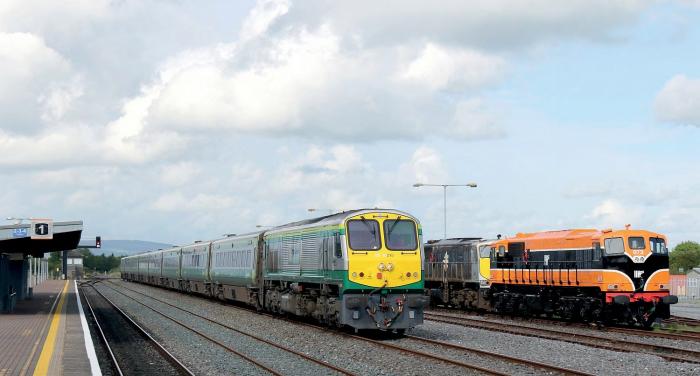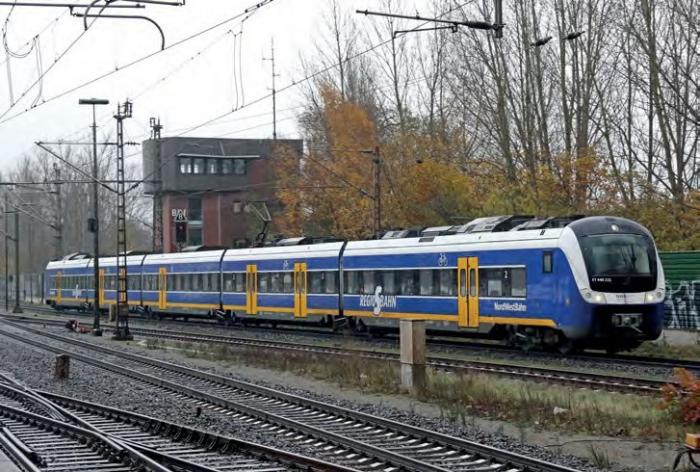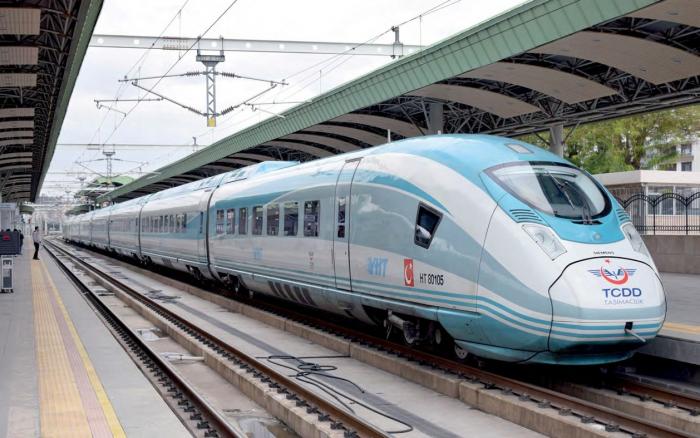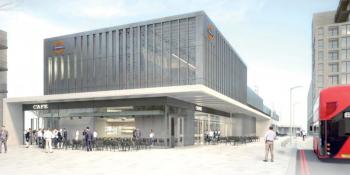
Keith Fender


€30.6 BILLION FOR CEF
The European Union is currently developing its budget plans for the period 2021-2027. These have to account for reduced overall contributions, as the UK will have left the EU by then (reducing the overall contributions from member states by €91 billion). Under plans announced in May (and due to be confirmed in June), the Connecting Europe Facility (CEF) is likely to receive increased funding, with €30.6 billion between 2021 and 2027, an increase of around 30% on the €21.3 billion allocated from 2014 to 2020 (which included funds spent in the UK). The CEF funds investments in railway (and other transport) projects such as the TEN-T corridors, plus the rollout of European Rail Traffic Management System (ERTMS).
Given the need for co-financing from member states or rail operators for most projects, the €21.3 billion in the previous budget period is expected to have led to overall investments of double that amount during 2014-2020.
The €30.6 billion total for 2021-2027 is split into three subsets. €12.8 billion is allocated for projects across the EU that meet CEF criteria. €11.3 billion is allocated for projects supported by the Cohesion fund, which seeks to improve infrastructure in less developed parts of the EU. €6.5 billion is allocated for the EU to ‘enhance its strategic transport infrastructures to make them fit for military mobility’: this is likely to be specifically targeted at improving TEN-T routes in Eastern Europe to improve military logistics in the event of international tension or war. The Rail Baltica project to build a standard gauge railway connecting the Baltic states (and possibly Finland) with the rest of the European railway network via Poland is likely to be a major recipient of these funds.
CROSS-BORDER ELECTRIFICATION UNDER WAY
Work began on 17 April to electrify the 6.5km section between Landgraaf and Herzogenrath on the line linking Heerlen in the Netherlands and Aachen in Germany. This will allow a new cross-border electric service to be operated between Liege in Belgium and Aachen, serving Maastricht and Heerlen in the Netherlands. This will be operated by Arriva from 9 December, as part of the Limburg regional concession, using eight tri-voltage Flirt3 EMUs being supplied by Stadler, operating initially only between Aachen and Maastricht.
The project includes doubling the Heerlen to Landgraaf section plus a new platform at Herzogenrath and is costing around €60 million (€28 million from the EU). Electrification is at 1.5kV DC in the Netherlands and 15kV AC for the short section in Germany, changing at the border. Our thanks to John Morris for some of the information in this item.


DB LOSES HANNOVER S-BAHN CONTRACT
DB Regio has lost the contract to operate one of the biggest S-Bahn networks in Germany, serving the city of Hannover and the surrounding area. Transdev subsidiary NordWestBahn (NWB) has won the tender and this was approved on 8 May by the lead tendering authority, the Regional Assembly Hannover. Both Niedersachsen transport authority (LNVG) and transport authority Zweckverband Nahverkehr Westfalen-Lippe in the neighbouring state of Nordrhein Westfalen need to formally approve the award: they have already audited the bids and found no issues. The contract covers 9.1 million train kilometres annually, from 12 December 2021 until 18 June 2034, operating 10 S-Bahn routes.
The NWB offer was reported to be 14.6% lower than the minimum expected by the tendering authorities, and will cost them around €42.5 million annually at forecast 2019 prices.
The Hannover S-Bahn network started operation in May 2000 in time for the Expo2000 World Fair event, with DB Regio as operator. It has been expanded to 385 route kilometres since then, with around 31 million passengers annually.
The new operator is obliged to use 13 former DB Regio Class 425 four-car EMUs that were directly funded by the contracting authorities, but it will need to replace the 40 Class 424 and 15 Class 425 EMUs also used by DB. The NWB offer includes nine more trains for the overall fleet than DB used, according to local media reports of the various approval meetings, all nominally held in private.
Tenders were submitted by four bidders in mid-2016 (local media report that, in addition to NWB and DB Regio, both Abellio and Keolis submitted bids after three other un-named potential bidders who had registered interest declined to bid). Once the result is confirmed, the unsuccessful bidders have 14 days to lodge objections; it was widely expected DB would do so. DB has successfully used legal challenges to delay and ultimately frustrate several previous major contract losses: in Nuremberg, DB legal action delayed and ultimately ended National Express’s successful bid to operate the S-Bahn network in 2016. However, NWB already operates the only non-DB operated S-Bahn network in Germany, in Bremen, to the north of Hannover (since services began there in 2010).
FLIXTRAIN INTRODUCES MORE STUTTGART SERVICES
After taking over operation of the former Locomore open access service in Germany (in collaboration with Czech operator Leo Express) in August 2017, Flixtrain has announced plans to add a second train pair on the Stuttgart – Berlin route from 21 June.
From 12 June the service on the original Stuttgart – Berlin – Stuttgart route was to operate daily (currently five times a week), and from 21 June the second train pair was to operate from Thursday to Monday (inclusive) in the other direction from Berlin to Stuttgart (returning ex-Stuttgart at 14.12).
This gives two Flixtrain services in each direction – one in the morning, the other in the afternoon – five days a week. Maintenance will be undertaken on one or both train sets on the Tuesday and Wednesday that the second train pair does not run.

NEW PLATFORM FOR LIMERICK JUNCTION
Iarnrod Eireann (IE) has submitted a planning application to Tipperary County Council to construct a new 240m-long Down platform for Limerick Junction. The station has long been famous for having both Up and Down services serving the same face of a single 484.3-metre (1,589 feet) long island platform from a loop off the main line.
The new Down platform will save conflicting moves, removing the need for Down services calling at the station to cross over the Up line. However, passengers interchanging between the shuttle train to/from Limerick Colbert station and Down services to Cork will have to use a footbridge rather than enjoy a very convenient same-platform interchange.
The new platform will enable journey times for Dublin Heuston to Cork services to be improved by around five minutes and will enable trains that currently do not stop to serve Limerick Junction without significant time penalty. The connecting footbridge will include high capacity lifts. The scheme is scheduled for completion by mid-2019 and will cost €3.5 million. Tim Casterton
GALWAY REDEVELOPMENT PARTNER ANNOUNCED
Coras Iompair Eireann (CIE) – the state holding company that owns IE – has announced that Galway-based developer Seagullpoint Ltd is to partner with it in the redevelopment of an 8.2-acre area around Galway Ceannt station. The developer will have seven years to design and build the final scheme. CIE will retain full use of the land for at least two years, to allow IE to relocate sidings that presently extend into the site area and relocate train crew accommodation. The scheme is designed primarily to deliver an ‘urban quarter’ around the station, involving a new transport hub and large scale retail, office and residential development; however, sufficient land is to be reserved to expand the station if future need arises and funding becomes available. The developer is required to maintain a 130-space car park at the station throughout the redevelopment. Tim Casterton

NS SWITCHES TO HOME ROSCO
In late February, Dutch national passenger operator NS announced it had restructured its train leasing businesses and reallocated its core domestic fleet from Dublin-based NS Financial Services Co Ltd to a wholly-owned rolling stock leasing company (ROSCO), called NS Lease, based in the Netherlands. The reason for this move was political outcry at the large sums NS had avoided in tax payable to the Dutch government (its owner), with payments of over €250 million involved, according to media reports in both Ireland and the Netherlands.
This resulted in the Dutch Finance ministry instructing NS to cease using its Irish company. NS established NS Financial Services Co Ltd in 1999 and the company remains in business for non-NS trains and customers; recent NS train orders have not been financed via it.
Ireland remains a popular location for rail leasing companies, as the tax rate on profits is 12.5% (compared to, for example, 30% in Germany or 25% in the Netherlands).
NS subsidiary Abellio uses a different Dublin-based ROSCO, Disa Assets Ltd, to own trains used for contracts in Germany: so far the Dutch Finance Ministry edict has not been applied to Abellio’s German activities.

Other major rail leasing firms use multiple Irish subsidiaries to finance wagons in particular, such as French companies Ermewa (wholly owned by SNCF) and private wagon specialist Touax. Russia’s largest private wagon leasing company Brunswick Rail has used its Dublin-based subsidiary to finance much of the investment it has made in new wagons in recent years.
In late May it was announced NS had undertaken a sale and leaseback transaction with leasing company Akiem (part owned by SNCF via Ermewa), selling the entire NS-owned fleet of 45 Class 186 Traxx-MS locos to Akiem. These locos were bought as an urgent purchase without the normally mandated tendering process, following the Fyra debacle. They are currently used, alongside leased similar locos, to operate Intercity Direct (ICD) services via the HSL-Zuid line, plus some Benelux (Amsterdam – Brussels) services. The ICD services are due to be converted to the new Intercity New Generation EMUs that Alstom is building from around 2022: some of these will also operate some Benelux services, which will leave the NS Class 186 fleet unemployed. The class is approved for use almost everywhere in Europe, meaning Akiem is likely to be able to find alternative users.

PESA NATIONALISED
Polish rail engineering firm Pesa has been taken over by the Polish government-owned Polish Development Fund (PFR), which will acquire all the shares in the company. Based in the central Polish city of Bydgoszcz, Pesa is one of two major Polish rolling stock manufacturers to emerge from the various former state railway workshops which were privatised in the early 1990s. Pesa, along with its domestic competitor Newag, has developed export markets, alongside the orders from Polish operators of which the two companies have historically won a large share. Stadler, with its ‘greenfield’ site factory south of Warsaw at Siedlce, represents the main ‘new’ competitor (for example, winning half the orders for EU-funded EMUs for PKP Intercity in recent years with Flirts, while Pesa supplied its Dart model). Stadler has also built many trains for export there.
The site currently operated by Pesa, alongside the main station in Bydgoszcz, was first developed as a railway workshop in the 1850s by the Prussian Ostbahn company as until 1918 the town was part of the German Empire. Following the re-establishment of the Polish state, it became one of the key railway works of state railway PKP and remained in this role until the early 1990s, when it was quasi-privatised with the state investment company holding the shares.
In 1998 it was bought by its management and in 2001 became Pojazdy Szynowe Pesa Bydgoszcz Społka Akcyjna Holding (Pesa). The company has expanded through joint ventures in neighbouring countries, and also by acquiring other Polish rolling stock maintenance companies. In addition to building new trains and light rail vehicles, the company undertakes overhauls and rebuilding work for both locomotives and coaching stock from PKP IC and many private freight operators.
Pesa has been in financial difficulties for some time with the absence of major new domestic orders (PKP IC chose not to order any further Dart EMUs). Newag beat Pesa in tenders to supply modern electric locos to PKP IC and the city of Moscow scaled back a major tram order amid political tension between Russia and the EU. In addition, a large (but so far revenue- and profit-draining) contract to supply Link DMUs to DB in Germany has caused cash flow problems: many of the trains are built but approval problems have prevented them being used. A deadline has been set by some contracting authorities in Germany of introduction before December or cancellation of the contracts. In November 2017 a consortium of six banks agreed a loan to Pesa of PLN 200 million (£41 million), with the condition that the company had to find a strategic investor able to repay the loan; several international rolling stock manufacturers were reportedly interested in acquiring the firm. Pesa said in late 2017 that it needed this finance in order to be able to fulfil existing orders for Elf II EMUs and trams for Polish operators.
On 21 May Pesa secured a new order. Warsaw suburban operator SKM signed a contract worth around PLN 310 million (£63 million) with Pesa for 13 Elf II EMUs (7x4-car and 8x5-car sets) for delivery starting next year, with an option for a further eight trains (1x4 car and 7x5-car sets) for delivery by 2023.

FREE JOURNEYS FOR WORLD CUP
Russian Railways (RZD) is providing hundreds of extra trains to transport football fans during the football World Cup, which will be played at stadia in the cities of Moscow, Kaliningrad, St Petersburg, Kazan, Nizhny Novgorod, Samara, Volgograd, Saransk, Rostov-on-Don, Sochi and Yekaterinburg between 14 June and 15 July. For match ticket holders (who also have to have a ‘Fan ID’ in lieu of a visa), travel is free even in sleeping cars, with the Russian authorities funding the cost, although reservations are required (and these were rapidly running out by early June). In the cities concerned, local transport systems (metro and trams) are free on match days for fans with match tickets.
RZD says that in total 734 additional trains providing 448,000 seats or sleeper berths are being operated. In Volgograd (formerly Stalingrad) a new 1.2km electrified line serving the airport was opened on 18 May, as part of a programme of World Cup related infrastructure upgrades, especially for regional airports.
The planned high-speed lines connecting Moscow with St Petersburg and Kazan, which were part of the Russian bid to tournament organiser FIFA in 2009 (the tournament was awarded in December 2010), have not been built. The Moscow – St Petersburg line has however been progressively upgraded with the fastest trains operated by Siemens Velaro high-speed EMUs, branded as ‘Sapsan’ (Peregrine Falcon), achieving 3hr 30min timings on the 650km route.
The planned 772km Moscow to Kazan route, which would reduce journey times from 12hr to around 3.5hr, remains at the planning stage, despite RZD signing a co-operative agreement with China Railway Corporation for the development of the route in 2014. Chinese, Spanish and German consortia are reportedly interested in building it, but financing is not agreed. The project is likely to cost around US$20 billion and the Russian government has previously indicated it does not want to directly fund it, leaving the issue to RZD and potential construction concessionaires.
INTERNATIONAL CONNECTIONS
Karelian Trains (a 50:50 joint venture of RZD and Finnish operator VR), which operates Alstom-built dual-voltage (3kV DC/25kV AC) Pendolino trains branded as ‘Allegro’ between Helsinki and St Petersburg, is offering discounted fares for travellers with World Cup match tickets. Finland didn’t qualify for the World Cup, but neighbouring Sweden did.
RZD and Polish operator Polregio trialled passenger services between north east Poland and the Russian Baltic enclave of Kaliningrad earlier this year to test the practicality of running trains for World Cup matches (four of the group stage matches will be played in Kaliningrad, although none includes the Polish team). It was unclear if trains will run, due to immigration requirements on both sides.

HITACHI AND TRANSMASHHOLDING FORM JOINT VENTURE
Hitachi and Russian rail engineering conglomerate Transmashholding (33% owned by Alstom) have formed a joint venture to produce high performance traction inverters in Russia for use there and elsewhere in the CIS region. The new joint venture is capitalised at 375 million Rubles (£4.5 million), with Transmashholding having a 51% share and Hitachi 49%. It will be based at Transmash’s Metrowagonmash subsidiary (which specialises in building metro EMUs, some of which have previously used Hitachi-supplied traction equipment) in Mytishchi, north east of Moscow. Annual production output is initially planned to be 200 traction systems per year.

RENFE GRANTED LONG-TERM CONTRACT
The Spanish state operator has agreed with the Spanish government a 10-year monopoly contract to operate all regional and suburban trains in Spain. The contract, set to be signed in June, will also allow for extension of up to five years, taking it to 2033.
RENFE will be paid approximately €1 billion a year to operate the services. From December 2020, RENFE will potentially face long-distance and high-speed competition, although international high-speed competition is planned from later this year by new entrant Air Nostrum.
EU legislation requiring the tendering of all rail passenger services becomes effective from December 2020, but some EU member states appear to be interpreting the deadline as the latest point by which national incumbent operators can be given long-term contracts, to shield them from potential competition. In Italy, several regional governments have recently awarded long-term contracts, covering the next decade, to the incumbent Trenitalia. These long-term contracts are permitted under the liberalisation legislation, if awarded before December 2020, even if they go against its stated intention.


MORE VELAROS FOR TURKEY
Siemens has won a contract, worth around €340 million, to supply 10 more Velaro high-speed trains for Turkish State Railways (TCDD). This order will bring the Turkish Velaro fleet to 17 trains. Each of the eight-coach trains, which will be built at Krefeld, is based on the similar Velaro-D in use with DB in Germany (as Class 407), although the Turkish trains feature different interiors. The first Velaro delivered to TCDD had previously run on test in Germany as DB set No 407 001, but due to approval delays in Germany it was sold to Turkey as a pre-series train (DB later received a ‘new’ unit numbered 407 001).
TCDD has been using its Velaros, classified HT80000, operating at up to 300km/h since 2015 on high-speed services known as Yuksek Hızlı Tren (YHT) between Ankara and Konya / Eskişehir.
They run alongside earlier 250km/h CAF-built HT65000 trains delivered for the opening of the first high-speed line between Ankara and Eskişehir in 2009. The Turkish high-speed network is being expanded, with work underway to finish the high-speed line between Istanbul and Ankara (on which through services began in 2014). New lines are also being added to connect Ankara with Sivas in the east of the country and Izmir on the Aegean coast in the west.




